What are examples of lifting equipment?
In modern industrial settings—from construction sites to manufacturing plants—efficient and safe lifting operations are essential. Lifting equipment plays a vital role in securing and transporting heavy loads, streamlining operations, and enhancing workplace safety.
In this article, we explore a wide range of examples of lifting equipment and delve into their applications, benefits, and maintenance practices. We will also discuss how these pieces of equipment contribute to the broader field of material handling, an industry that continues to evolve with technological advancements.
With a detailed exploration of various devices such as lifting clamps, vacuum lifters, slab lifters, scissor lifter, and more, this guide is designed to answer the question: "What are examples of lifting equipment?" Whether you're responsible for handling material in an industrial setting or are a decision-maker in one of the leading material handling companies, understanding your options is crucial.
Introduction to Lifting Equipment and Its Applications
Lifting equipment refers to a broad category of devices and machines designed to raise, lower, and transport heavy objects safely and efficiently. These machines serve as the backbone of operations in diverse industries such as construction, warehousing, manufacturing, and shipping. The correct selection and use of lifting equipment not only improve operational productivity but also help in reducing workplace accidents and preventing damage to goods.
The lifting equipment market is ever-growing, thanks to innovations that enhance safety and functionality. From handheld devices to automated systems, these tools have transformed the way industries handle material, making tasks that were once labor-intensive now both efficient and reliable. Key innovations include ergonomic designs, smart sensors for load monitoring, and enhanced safety features that protect both operators and equipment.
Common Types of Lifting Equipment
Several types of lifting equipment are specifically engineered to meet various operational requirements. Below, we review some of the most commonly used types along with their unique benefits and applications.
Lifting Clamp
A lifting clamp is a versatile device used to grip and stabilize heavy components during lifting. Typically employed in metal fabrication and steel erection, these clamps come in various forms—such as pipe clamps and universal clamps—designed to ensure secure handling of different shapes and sizes. Their robust design allows them to hold heavy loads in place, thereby minimizing the risk of accidents during lifting operations.
Vacuum Lifter
The vacuum lifter utilizes negative pressure to adhere to smooth surfaces, such as glass, metal panels, or even polished stone. This type of equipment is particularly useful when dealing with delicate materials, as it offers a damage-free method of handling. By eliminating the need for physical gripping mechanisms, vacuum lifters reduce the risk of surface damage and are widely used in industries where appearance and integrity are paramount.
Slab Lifter
For lifting large, heavy, and unwieldy materials like concrete or stone slabs, the slab lifter is indispensable. Designed to lift and move slabs with precision, these lifters are equipped with features to ensure even load distribution. They are often seen in construction sites where ready-made concrete products or natural stone needs to be relocated safely and efficiently.
Scissor Lifter
The scissor lifter is a compact and space-efficient lifting device that excels in vertical movement. Its scissor mechanism extends and retracts smoothly, making it ideal for facilities with limited floor space. Besides its vertical lift capabilities, the scissor lifter is valued for its stability and safety, thereby reducing the operational risks during high-rise lifting tasks.
Ratchet Tie Down Traps
Although often mentioned as ratchet tie down traps, these devices are typically more accurately known as ratchet tie down straps. They are used to secure loads during transport or while hoisting heavy equipment. By tightening the straps around a load, these devices prevent movement and vibration, ensuring that the cargo remains stable during lifting or transit. This is particularly important for safeguarding expensive or delicate items.
Gantry Crane
A gantry crane is a large, overhead lifting system that features a rigid structure and is designed for outdoor or heavy-duty industrial use. Gantry cranes have a wide span and are capable of lifting extremely heavy loads, making them essential for applications like shipyards, large construction sites, and steel mills. Their versatility and rugged build are key factors in their widespread adoption across the material handling industry.
Jib Crane
Another common piece of lifting equipment is the jib crane. Mounted on either a wall or a pedestal, jib cranes feature a horizontal arm that rotates to reach various positions across a work area. Their focused range of motion makes them ideal for smaller, targeted lifting tasks in workshops and assembly lines. Jib cranes are especially useful when precision placement of loads is necessary.
Material Handling and the Role of Lifting Equipment
The Importance of Material Handling
Material handling encompasses all the systems and equipment involved in moving, storing, controlling, and protecting materials throughout the manufacturing and distribution processes. Efficient material handling practices are crucial for maintaining a smooth workflow in warehouses, factories, and construction sites. When properly integrated with lifting equipment, these processes contribute significantly to overall operational efficiency and safety.
Managing the movement of heavy goods safely is not just about technology—it also involves planning, organization, and proper training. This multifaceted approach ensures that companies can handle material effectively while reducing costs and minimizing risks.
Material Handling Equipment and the Industry
The realm of material handling equipment includes everything from forklifts and conveyor belts to specialized lifting equipment like vacuum lifters and gantry cranes. The material handling industry is highly dynamic, continuously evolving with new technologies that offer enhanced performance and improved safety features. Companies specializing in this field invest heavily in research and development to create solutions that address the specific needs of various industrial sectors.
In addition, the term material handling equipment is used interchangeably with material handling equipment in many circles. These machines are not only crucial for daily operations but also serve as an investment in overall productivity and operational safety. Leading material handling companies continually assess market needs to introduce products that align with contemporary work practices, emphasizing both energy efficiency and user safety.
For those seeking an in-depth look at how to manage and optimize the movement of goods, this guide on material handling provides excellent insights into industry best practices and technological advancements.
Examples of Lifting Equipment in Use
Real-World Applications
Across various sectors, lifting equipment is employed for tasks ranging from simple lifting operations to complex construction projects. Here are a few examples of how different types of lifting equipment are put to use:
-
Lifting Clamp: In metal fabrication plants, lifting clamps are critical for holding heavy beams or pipes in place during assembly processes. Their secure grip minimizes the risk of accidental drops.
-
Vacuum Lifter: In the automotive and glass manufacturing industries, vacuum lifters facilitate the handling of large, fragile panels without leaving marks or causing damage.
-
Slab Lifter: On construction sites, slab lifters are used to maneuver heavy concrete panels into position, enabling quick and safe installations.
-
Scissor Lifter: Factories or warehouses with high storage racks often employ scissor lifters for elevating products to different levels, maximizing the use of vertical space.
-
Ratchet Tie Down Traps: When transporting sensitive equipment over long distances, ratchet tie down straps ensure that loads remain stable and secure during transit.
-
Gantry Crane: In shipyards or steel mills, gantry cranes lift enormous loads, such as ship sections or large steel frameworks, with precision and reliability.
-
Jib Crane: In automotive workshops, jib cranes are used to position heavy engine components during vehicle repairs, enhancing both efficiency and safety.
Safety and Maintenance of Lifting Equipment
Best Practices for Safety
Operating lifting equipment safely is paramount. Companies must adhere to strict safety protocols and guidelines to ensure the well-being of both personnel and equipment. Here are some critical practices:
-
Operator Training: It is essential that every operator undergoes proper training and certification. Understanding the mechanics of equipment such as a lifting clamp or vacuum lifter can significantly reduce accidents.
-
Regular Inspections: Routine maintenance and inspection schedules help identify wear and tear before equipment failure occurs. Ensuring that every component is in working order is key for safe operation.
-
Load Testing: Regular testing of equipment against its maximum rated capacity ensures reliability. Overloading machines like gantry cranes or jib cranes can be extremely dangerous.
-
Safety Gear: Use of personal protective equipment (PPE) in conjunction with secure tie-down methods, such as ratchet tie down straps, is indispensable to prevent injuries and maintain control over heavy loads.
Maintenance Guidelines
Proper maintenance extends the life and reliability of lifting equipment. Here are some tips for ensuring that your equipment remains in optimal working condition:
-
Documentation: Maintain detailed records of inspections and repairs. This documentation is useful for both internal audits and compliance with safety regulations.
-
Preventive Measures: Implement routine preventive maintenance, including lubrication of moving parts, calibration of sensors, and checks on any hydraulic systems.
-
Upgrades: Regularly assess your equipment for opportunities to upgrade to newer models featuring the latest safety and automation technologies. For instance, the integration of remote monitoring systems can alert operators to any deviations from normal operation before they become serious issues.
-
Training Refreshers: In addition to initial training, provide periodic refresher courses to operators. As technology evolves, keeping staff updated on the latest best practices is critical.
How to Choose the Right Lifting Equipment
When selecting the appropriate lifting equipment for your operations, several factors must be taken into account:
1. Assess Your Load and Material Needs
-
Load Capacity: Determine the weight and dimensions of the typical loads. Knowing whether you need equipment capable of handling heavy slabs or lighter, more frequent lifts helps narrow down choices.
-
Type of Material: Consider the characteristics of the material being handled. Fragile surfaces may require a vacuum lifter, whereas more robust structures might be best managed by a lifting clamp.
2. Evaluate Your Work Environment
-
Space Constraints: Evaluate the physical space in which the equipment will operate. For example, a scissor lifter is ideal in environments with limited floor space due to its compact design.
-
Indoor vs. Outdoor Use: Determine if the equipment needs to operate in an indoor controlled environment or outdoors, where conditions such as weather and uneven terrain can play a role. Gantry cranes, for instance, are particularly suited for outdoor industrial applications.
3. Consider Safety Features and Reliability
-
Built-In Safety Mechanisms: Look for equipment with features like overload protection and automatic locking systems.
-
Reputation of Manufacturer: Work with reputable material handling companies that guarantee quality and adhere to industry standards.
4. Long-Term Costs and Maintenance
-
Cost-Efficiency: Consider both the upfront investment and the long-term maintenance costs. High-quality equipment might offer a higher initial cost but will save money in the long run by reducing downtime and operational hazards.
-
Ease of Maintenance: Equipment that is easier to maintain and service will reduce the burden on your maintenance teams and contribute to longer operational life.
The Broader Impact on the Material Handling Industry
Lifting equipment is not only vital for moving heavy loads—it’s a fundamental element in the efficient handling of material. In the broader context of the material handling industry, the integration of various types of lifting equipment supports smoother workflows, better space utilization, and improved safety records. Innovations in this space have paved the way for smarter factories and more agile production lines.
Companies worldwide are investing in both traditional and high-tech material handling equipment to remain competitive. The evolution of digital monitoring systems and automation has revolutionized how equipment is used, paving the way for integrated platforms where lifting equipment, such as gantry cranes and jib cranes, operate seamlessly together. The result is a safer, more efficient environment for both operators and assets.
Conclusion
Examples of lifting equipment are ubiquitous in a myriad of industries today. From lifting clamps and vacuum lifters that grip and transport delicate materials, to robust solutions such as slab lifters, every device plays a crucial role in ensuring operational excellence and safety. The importance of specialized equipment such as the gantry crane and jib crane cannot be overstated, especially when these machines work in tandem with best practices and advanced material handling strategies.
Investing in the right lifting equipment involves understanding your operational environment, the materials you handle, and the overall requirements of your workflow. It also means staying abreast of technological innovations that promise increased safety, efficiency, and cost-effectiveness. With regular maintenance and proper training, the equipment will not only perform at its best but also ensure that operators work in a safe and supportive environment.
By carefully considering all aspects—from load capacity and material type to environmental conditions and budget constraints—businesses can choose the most appropriate solutions. In doing so, companies not only improve their operational efficiency but also build a robust infrastructure that supports the dynamic nature of modern material handling operations.
Ultimately, examples of lifting equipment showcase a blend of mechanical ingenuity and practical application. Whether you're a small enterprise or part of a large industrial operation, integrating advanced lifting solutions is critical for staying competitive. As the material handling industry continues to evolve, it is imperative to adopt strategies that enhance productivity, safety, and profitability. Embracing these technologies today sets the foundation for a more efficient and secure tomorrow.
In summary, understanding what constitutes effective lifting equipment—from the power of a vacuum lifter to the precision of a scissor lifter—empowers organizations to make informed decisions that align with their operational goals. With proper planning, diligent maintenance, and a focus on safety, the benefits of lifting equipment extend far beyond the mere movement of heavy loads, ultimately contributing to a safer, more productive work environment for all.













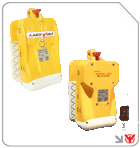

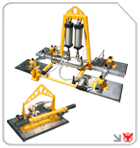
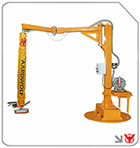
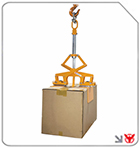
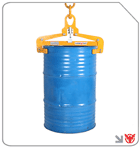

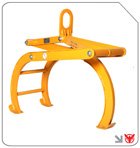

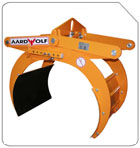
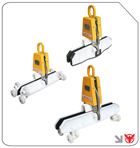

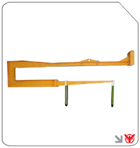
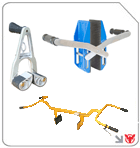
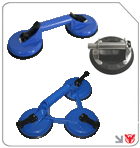

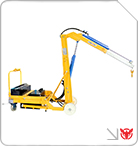

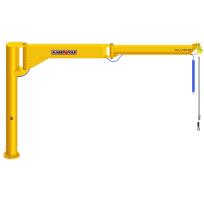
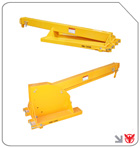
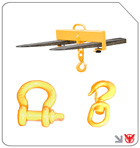
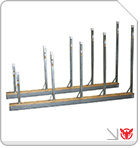
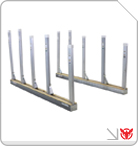
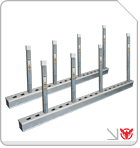



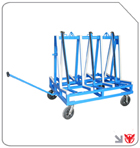

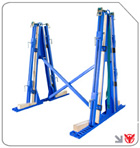
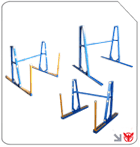
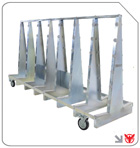



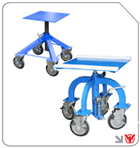




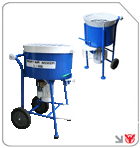

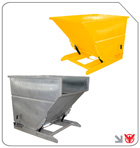

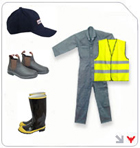
Follow us on: